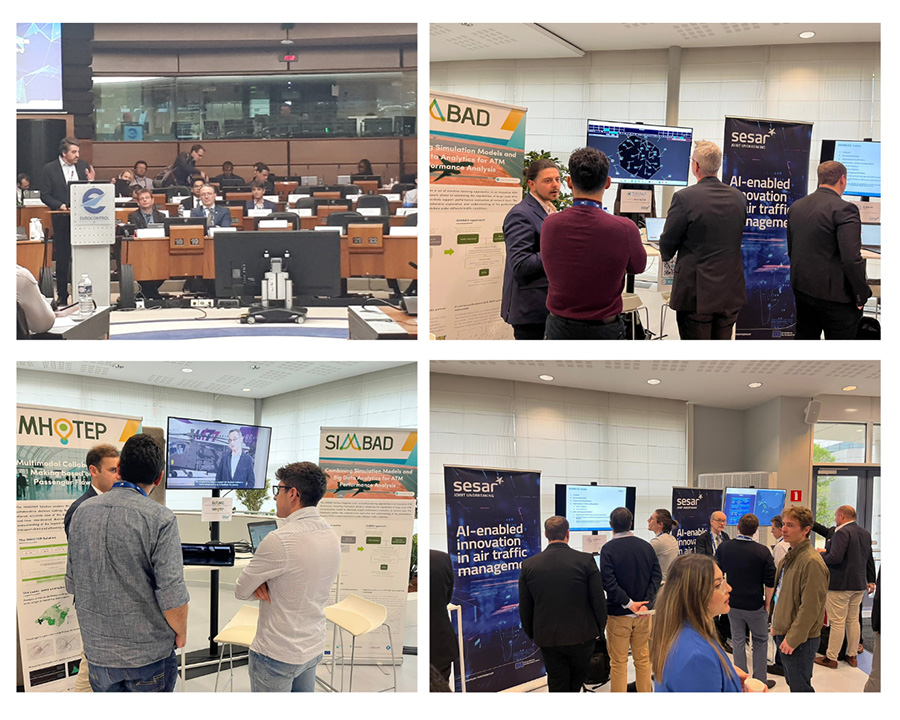In short
|
|
|
|---|---|
|
PROJECT ID
|
BUBBLES |
|
PROJECT DURATION
|
2020-05-01 > 2022-10-31 |
|
PROJECT TYPE
|
Exploratory research |
|
TOTAL COST
|
EUR 1 893 197,50 |
|
EU CONTR.
|
EUR 1 606 108,75 |
|
STATUS
|
Ongoing |
Objectives
Keeping aircraft safely separated is one of, if not the core function of air traffic management today. As larger numbers of unmanned aerial systems (UAS) take to the skies, separation management become more important to avoid mid-air collisions.
Defining a risk-based, operation-centric concept of operations (ConOps) for the provision of U-space separation management enables the remotely piloted sector to grow in a safe and efficient way. The ConOps developed by BUBBLES comprises the definition of conflict horizons, separation modes, and the applicable separation minima, which are dynamically updated using artificial intelligence (AI)-based algorithms to adapt them to the actual performance of communication, navigation and surveillance (CNS) systems.
Manned aircraft benefit from BUBBLES ConOps as they have better situational awareness and can be assisted to manoeuvre in the event of loss of separation. At the same time, UAS operators can safely exploit the airspace capacity given the UAS capabilities and the available U-space services, as well as the actual CNS performance.
The ConOps was validated by using simulators developed by the project, as well as by means of a test flight campaign where several UAS flew simultaneously using a mock-up developed based on Indras’s UTM platform, U-TraC. U-TraC monitored the CNS performance and provided dynamic separation management, traffic information, and alerts of increasing severity when the separation minima were compromised.
BUBBLES defined the separation management as a new SESAR solution in the European air traffic management architecture (EATMA), which will be considered in future research activities aimed at developing U-space level 3 (U3) services mature enough to be deployed. In the short-term, the results will be used to improve some U2 services such as traffic information and strategic conflict resolution.
Benefits
- Improved airspace capacity and safety
- Better awareness of separation loss events
- Early resolution of separation issues

The BUBBLES project aims at defining separation minima and methods for unmanned air systems (UAS) flying in the very low level airspace (VLL), to improve the overall performance and safety therein. BUBBLES follows an operation-centric, risk-based approach, assigning the separation minima and methods within the framework of the U-space Concept of Operation (ConOps) and the corresponding risk level assessed using standard methodologies like specific operations risk assessment (SORA).
The project also develops algorithms to compute the collision probability between drones and between them and manned aircraft operating in the VLL, using separation minima to keep it under acceptable levels. Moreover, the project investigates how artificial intelligence (AI) can contribute to dynamically manage these minima using different separation methods and agents (from ground-based strategic conflict resolution to distributed self-separation). The mitigation effect of U-space services is also being taken into account, as well as the external and system induced risks (included those derived from the use of AI). Finally, BUBBLES extends the concept of Performance Based Communications, Navigation and Surveillance (CNS) to the drone operations to draft safety and performance requirements and developing monitoring tools in order to ensure that their actual performance complies with them.
BUBBLES develops Artificial Intelligence (AI) based algorithms to compute the collision risk of UAS leading to separation minima and methods so that a Target Level of Safety (TLS) stated in terms of overall probability of collision can be defined and maintained.
These algorithms are being applied to a set of generic ConOps for UAS operations defined by BUBBLES, detailed enough to cover most of the envisaged applications, but generic enough not to be linked to any particular one. They are classified in terms of risk using the SORA methodology.
These separation minima and methods are assigned to the ConOps using AI techniques, leading to the definition of a set of generic OSEDs from which safety and performance requirements for the CNS systems are derived applying a performance based approach.
Participants
Universitat Politècnica de València
Universidade de Coimbra
Università degli Studi di Roma "La Sapienza"
EUROCONTROL
Indra Sistemas
This project has received funding from the SESAR Joint Undertaking under the European Union's Horizon 2020 research and innovation programme under grant agreement No 893206



